Baltic Sea tips: The 10 most beautiful city harbours - worth an overnight stay here
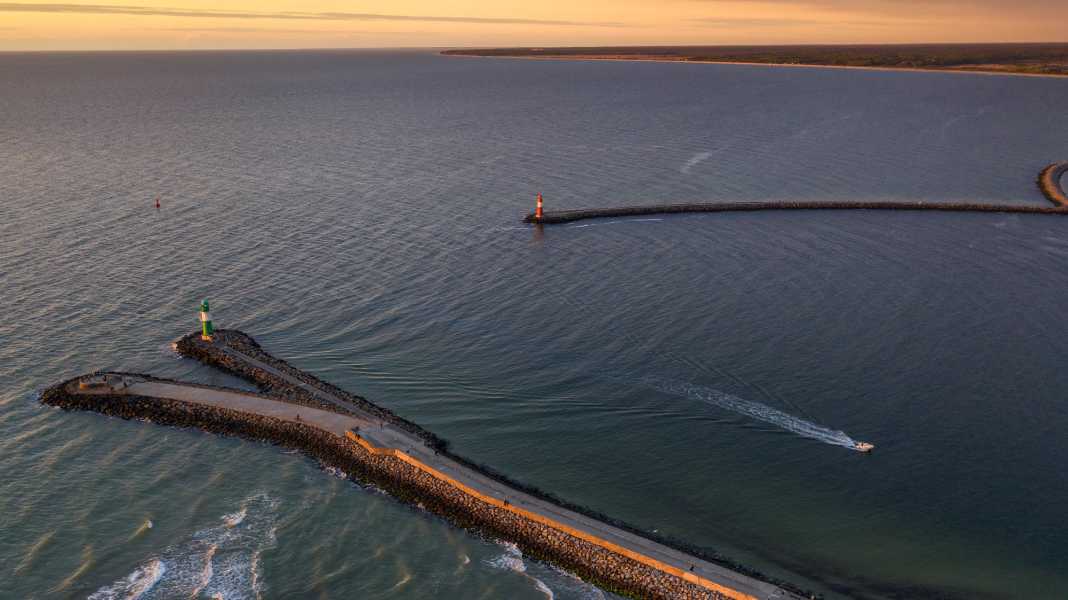
These cities and their harbours are presented in more detail in this article:
1 Stralsund- the pearl of the east

What a stroke of luck for us sailors that reunification happened. This meant that all crews gained what is probably the most beautiful harbour in a Hanseatic city on the entire German Baltic coast. Stralsund simply has the perfect mix: a sensationally beautiful old town with lovingly restored architectural monuments, plus the Ozeaneum, which is well worth a visit, as well as the German Maritime Museum and the old "Gorch Fock". The city is also lively due to the many students. You can shop extensively in the old town. There are plenty of shops. A stroll through Stralsund is never boring.
The best place for anyone travelling by water is without doubt the City Marina with its perfect view of old warehouses, the windjammer and the futuristic Ozeaneum building. It is located right on the edge of the old town. And a guest box is always free.
If you come on Wednesday evening, you can even watch a spectacle in the harbour if the weather is fine: Around 6 p.m., there are often around 50 to 60 yachts sailing the Wednesday regatta in the evening sun right in front of the harbour entrance. From the pier next to the old harbour pub "Zum Goldenen Anker", you have a perfect view of everything with a drink in your hand. Fan clubs of vintage mopeds and cars often meet there.
A visit to the oldest harbour pub in Europe, "Zur Fähre", is of course a must in Stralsund. It is just a few minutes' walk from the city harbour. It couldn't be more rustic for a late nightcap. If you want to dine upscale beforehand, go to the "Wulflamstuben" on the old market square. The terrace of the "Dolden Mädel Brauhaus" at the old fish market offers a beautiful view of the harbour. For the more frugal, there are fish sandwiches at the harbour. The best fish shop in the city is the Fischhalle near the Ozeaneum in Neue Badenstraße.
If you come in July, you can experience the Wallenstein Days. Every year, the people of Stralsund commemorate their town's successful defence against the conquering general with a festival, parades, markets, cannon thunder and muskets.
2 Rostock- at the Alter Strom






Many roads lead to Rostock: the beautiful harbour of Warnemünde directly at the mouth of the Warnow is the highlight for many. A great beach, the fishing harbour mile, the hustle and bustle of land-based tourists - there's always something going on here. There are plenty of moorings again since the Mittelmole harbour was completed. And there is also plenty to see. Climbing the old lighthouse (price: 3 euros) is a must, the view of the Warnow is sensational. The town is lined with quaint pubs, restaurants and shops. And then there's the beach to the north of the lighthouse.
The only downside is that it is either 30 minutes by S-Bahn or another six miles by boat to the historic city centre of the Hanseatic metropolis upriver. But it's worth investing a second day. After a few kilometres along the river, you pass the technical shipping museum including an old GDR freighter, you can go wakeboarding at the old IGA Park - or even sail into the city. There are a further eight harbours to choose from. The quietest and most central is the first one on the starboard side at Kabutzenhof. At the weekend, Rostock's students often party right on the banks of the Warnow.
3. flensburg- Highlight at the end of the fjord
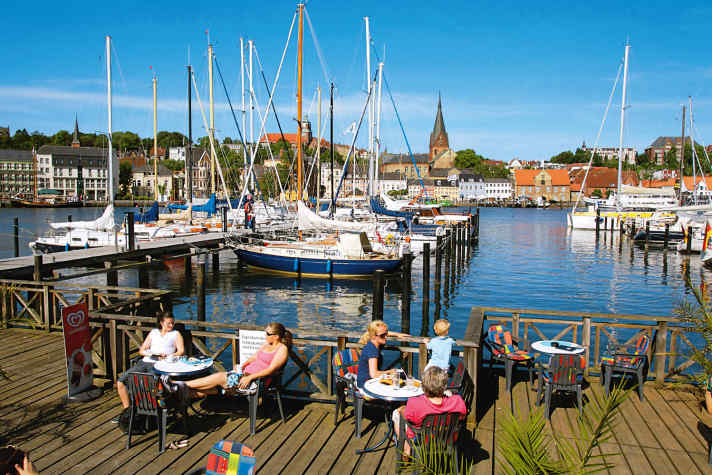
Admittedly, it's a long way: it's around 25 nautical miles from the entrance to the Flensburg Fjord to its apex. It is rare to catch an easterly wind on the way there and a westerly wind on the way back. Crews can therefore rarely avoid a cross. But it's worth it: there is a great view of Flensburg's historic old town directly from the moorings of the excellent city harbour. Opposite is the city centre with its pedestrian zone and the museum shipyard, which is well worth a visit and in front of which is what many sailors consider to be the best fish sandwich stand on the coast: the "Fischhütte". The often long queues in front of it seem to confirm this.
If you want to eat in a rustic fisherman's pub, go to "Piet Hennings" on the west bank, a stone's throw away. You should also take a look at the restoration objects at the museum shipyard. There are often historic working boats on display. On the way, you will pass the lovingly restored wooden boats that have their permanent moorings on the west bank, complete with information boards ( www.k-y-flensburg.de ).
Anyone interested in the more dignified sport of classic yachts should make a pilgrimage to the Yacht Heritage Centre on the east bank. By prior arrangement, groups can take a guided tour of the classic wooden boatyard of Robbe & Berking, where exciting restorations are often in progress. A visit to the Phänomenta is ideal for families with children. There are physics experiments to try out for yourself.
Flensburg was and still is a traditional sugar and rum town. As early as the 19th century, traders who imported and blended Caribbean rum made a name for themselves there. There are still many of them in the city centre today. The meeting of the corresponding working boats always takes place in May during the rum regatta. In September, however, the classic regatta is well worth a visit.
- VERLINKUNG Classic events Germany
4. Århus- the underestimated metropolis





Many crews leave the second largest city of the Nordic neighbours behind, as the extensive Århus Bay is a diversion - at least if you want to sail on to Anholt, Sweden or Copenhagen. A huge mistake, because the city of 340,000 inhabitants is enormously diverse and has the advantage that it is nowhere near as overrun with tourists as the capital. You can tell that it belongs even more to the residents, including around ten per cent students, who give Århus a young flair with a correspondingly large number of pubs, bars and shops.
Anyone approaching the city centre may initially be confused by the high-rise buildings on the old peninsula with the shipyards. But behind them lies a perfectly sheltered marina with everything you need. What's more, there is always a free spot here. The scenery all around is mega-modern, very different from the rest of the often tranquil Denmark. If you wander through the ultra-hip street canyons, you will find lots of exciting things, such as the city swimming pool in the middle of the high-rise buildings and harbour complex or a wakeboard track with a food court in front of it.
Next to it is the other, old Århus. The historic centre still has many beautiful streets and monuments. It is this mixture of traditional and modern architecture that always gives you the feeling of travelling back in time. The whole thing is taken to the extreme in the famous museum village "Gammle By", the "old village". Houses from three eras from all over Denmark are gathered here in a huge area. They have been dismantled in their original locations and rebuilt in the museum. There is nothing comparable on this scale anywhere else in the world.
Another thing visitors should not miss is the ultra-modern Aros Art Museum. It brings together art from many eras, from oil paintings to more abstract works and impressive contemporary installations. Towering high above the city, the museum's architectural showpiece is a rainbow circular path made of colourful glass.
The best way to explore Århus is by bike, with hire bikes available everywhere. The city's traffic concept is fantastic, separating cars and cyclists perfectly for the most part. There's always something new to discover on a stroll through the city. Sometimes it's designer shops for clothes or furniture, sometimes the beach "Den Permanente", which is less than 15 minutes away from the marina and is also worth a trip on warm days.
During the sailing season there are also a number of events, such as the Northside Music Festival (1 - 3 June) for youngsters and the Århus Festival at the end of August with numerous concerts, theatre and cabaret performances for everyone else.
5 Helsinki- Old splendour and new brilliance
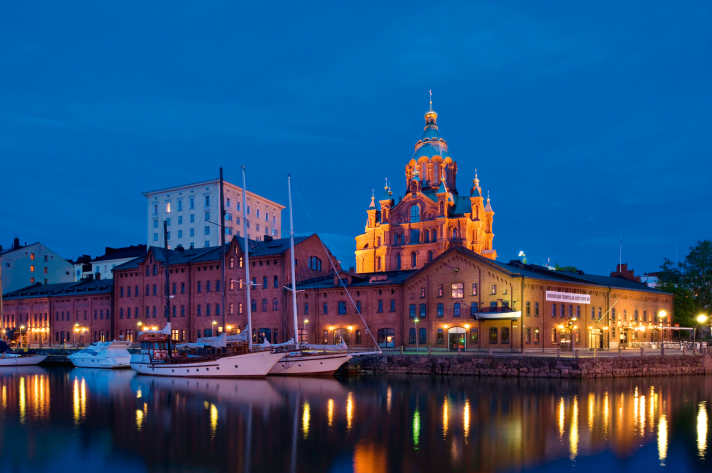
The Finnish capital is a cruising destination that every experienced Baltic Sea sailor has probably thought about at some point. But: 500 nautical miles from Rügen to Helsinki is something for a sabbatical or parental leave - or for a charter holiday from Turku. With over 600,000 inhabitants, Helsinki is a booming, young city. Many people are moving here from the countryside, there are good jobs and the economy is booming. And you can see that. The many architectural monuments such as the old cathedral or the Katajanokka district, which is characterised by Art Nouveau, as well as the Esplanadi promenade and the Kauppahalli market and shopping centre, have been beautifully restored.
Sailors can moor in the super-central Marina Bay. It is picturesquely situated in front of the old town centre, and the impressive Finnish icebreaker fleet is moored not far away in summer. The city with its offshore archipelago is extremely diverse. Above all, you should visit one or other of the five historic fortress islands in front of the city. There are also small club harbours with saunas on many of the islets. You should also try Finnish specialities such as reindeer meat. Tip: have a drink in the rooftop bar of the "Torni" hotel, the view is sensational.
6 Gothenburg- Sweden's cosy big city
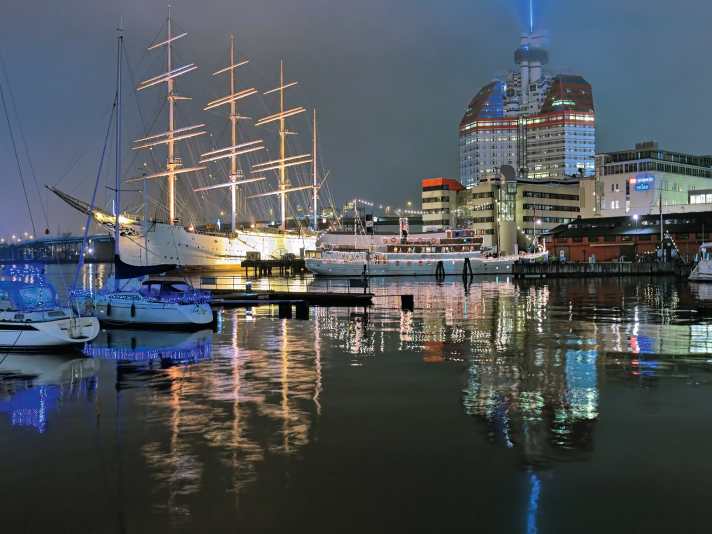
Mysig, or cosy, is what the Swedes call Gothenburg. In fact, the metropolis on the Kattegat is just the right size for a short visit, especially as you can moor your boat close to the centre at Lilla Bommen. The opera house and the floating naval museum are just a stone's throw away, as is the Nordstan shopping centre, where you can stock up on more than just provisions. If you prefer something a little more rustic, visit the "Fiskekyrkan" market hall, where you can buy fresh seafood, among other things.
The nicest cafés with the tastiest cinnamon buns can be found in the old working-class neighbourhood of Haga, which can be easily reached on foot from the city harbour. If you really don't want to walk, you can use the well-developed tram network instead.
The "Älvsnabben" provide the connection to the archipelago. These are water taxis that are also ideal for taking a stroll through the city from neighbouring islands such as Vrångö, Donsö or Styrsö.
Ferries dock at Lilla Bommen and create swell. Your own yacht is much quieter at the Royal Swedish Sailing Club in Långedrag. Tram line 11 runs from there to the city centre. This takes 25 minutes and saves you the five nautical mile journey up the Göta älv.
7 Stockholm- Rocks in the surf
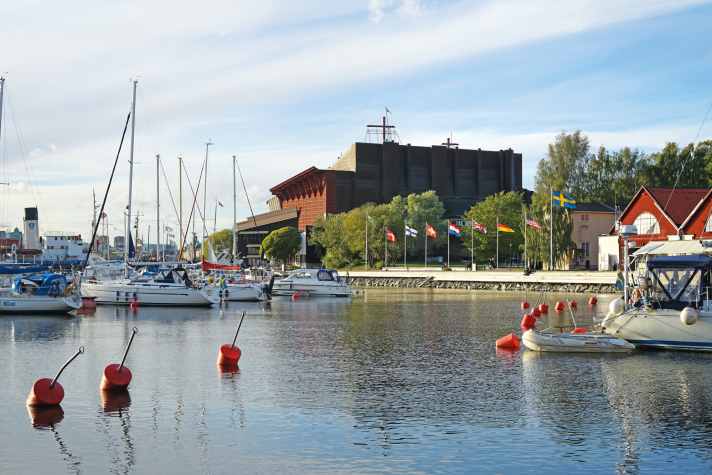
Sweden's capital is built on 14 granite islands. Approaching from the sea and through the archipelago, the city looks like a kind of Nordic Venice. Harbours, grandiose architecture - and canals, bridges and boats everywhere. Most crews moor right in the heart of the city in front of the Vasa Museum in the harbour of the same name. The huge galleon, which sank in front of the city and the king shortly after it was launched in 1628 due to construction faults, is a sight to behold today. In 1961, the ship was raised and restored remarkably intact.
However, the harbour is not very big. If you come in the high season, you should make a reservation to secure a place ( www.dockspot.com ). Alternatively, Waldemarsviken harbour a little further southwest is also recommended.
The city is bursting with sights, so plan at least three or four harbour days for a visit. At the top of the list is the beautiful historic city centre Gamla Stan, followed by the National Museum of Art, the Abba Museum and the Skansen museum village. With children, you can visit the Gröna Lund amusement park or the Junibacken children's book museum. And that's not all. As you stroll through the alleyways, you will automatically make exciting discoveries again and again. Stockholm never gets boring, even on a second or third visit. The city is a dream, especially in summer when the Scandinavian high is stable. The days are then endlessly long, with people sitting outside everywhere. There are countless cafés and restaurants, often with live music. A special tip for sailors is the Fartygsmagasinet at Österlånggatan 19, which houses an inimitable collection of nautical antiques. You can bet that you won't leave the shop empty-handed!
8th Copenhagen- the Mecca of the Danish sailors






Probably no other Baltic metropolis is as popular with sailors as Copenhagen. The reason is simple: it is so different from the German coastal cities - more sophisticated, more relaxed, more international and yet so easy to reach. From Rostock, for example, you can be there within two days of sailing. For many crews from Schleswig-Holstein, it is the highlight of a summer cruise lasting several weeks as part of a circumnavigation of the Seeland.
Anyone calling at Copenhagen will sail through an exciting mix of super-modern architecture and historic old town. However, skippers have to make a decision: There is no one central marina that offers plenty of space. Wilders Plads Marina is very central, but it only has a few guest berths. Nothing works here without a reservation (tel. 0045/4096/37 72). And first you have to cross a bascule bridge that only opens every hour. The Ofelia pier next to the theatre only offers long-side seating, it is also noisy and an area open to the public.
Most crews therefore go to Langeline harbour near the Little Mermaid or just north of it in Frihavn. The harbours of Margretenholm/Lynetten or Svanemøllehavnen, which are a little further out but blessed with plenty of space, are always a safe alternative. Anyone moored there has to cycle into the city by on-board or hire bike. However, this is no problem in the cycling paradise of Copenhagen and is highly recommended.
Of course you can tick off the classics on the spot: the really picturesque historic harbour mile Nyhavn with its restaurants and cafés, the royal castle Amalienborg with changing of the guard, the amusement park Tivoli, the state art museum, the great shopping mile Strøget.
But there is so much more to discover. One of them is the fantastic Reffen street food market in the old industrial district of Refshaleøen. It really does serve food from all over the world, and in summer, when the evenings are balmy, hundreds of visitors sit on deckchairs on the waterfront overlooking the city. No less exciting is the Design Museum Danmark, which showcases the world-famous clear and timeless design of Danish products, from lamps to furniture. If you want to see and buy the latest design, head to the upmarket department stores' Illum on Strøget Street. The best market with sensationally good Smörrebröd can be found at the Torvehallerne market halls.
9. gdansk- Poland's resurrected jewel
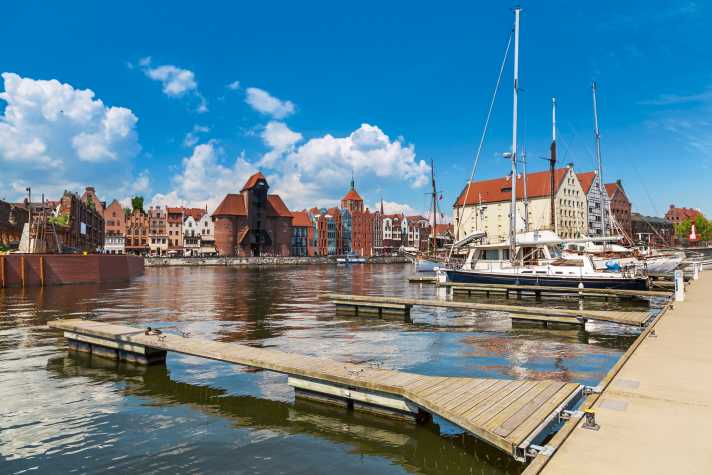
The trip east along the Polish coast to Gdansk, a good 200 nautical miles long, puts many German crews off: little protection and plenty of swell in strong winds, no islands off the coast and a long cross back with a prevailing westerly wind. It is therefore often crews that are close to the border or have a lot of time on their hands that head for the metropolis with its 500,000 inhabitants. You meet a lot of Swedes in Gdansk, for example.
The long journey is well worth it. The city, which was devastated by the Germans during the Second World War, has been rebuilt by the Poles with an incredible love for the old, historic architecture. The old town centre ensemble around the old crane gate is one of the most beautiful things the Baltic Sea has to offer. And you can moor right there, right in the centre of the action. Simply motor about five nautical miles up the Motława River, which later leads into the Vistula, and then moor in Gdansk Marina, or Gdansk as it is known in Polish. The modern harbour with floating jetties offers all the comforts that sailors could wish for. The maritime infrastructure has been extensively modernised in recent years.
Gdansk's main attraction is the Old Town with its picturesque alleyways, such as the Long Market or Ulica Mariacka. The view from the tower of St Mary's Church is fabulously beautiful. And of course you should visit the famous Amber Museum! The "Gdanski Bowke" brewery right by the harbour is a quaint destination where crews can sample local beers as well as regional cuisine, including the popular pierogi. On top of that, the prices in Polish marinas and restaurants are significantly lower than in Germany. You can charter from smaller Polish fleet operators, either in Gdansk or in Gdynia a few miles further north. The destination of a cruise would then be the Hel peninsula.
10 Lübeck- Reward of the long river journey





Admittedly, it's not everyone's cup of tea to chug the almost twelve miles uphill to the heart of Lübeck. And then to time it so that the Eric Warburg Bridge opens (9.30, 12.30, 17.00, 19.30) when you reach it. But it's worth the effort. Past Travemünde and the "Passat", the river has some lovely stretches and even quiet anchorages - keyword: bridge waiting time.
In the city centre, which for a long time only had a shabby jetty, the small Newport Marina has been shining for a few years now with good infrastructure in the form of a floating service building and a top restaurant on the shore next to the Mediadocks. The surrounding area has been completely remodelled in recent years.
Nevertheless, the star remains the city itself. The winding alleyways and courtyards exude a Hanseatic feeling, with the new museum on top. Hüxstraße is a cult shopping street, where there are also great restaurants such as "Vai" or "Miera". A meal at the "Schiffergesellschaft" is a must for sailors. The Petrikirche church offers a great view of the city. The top event is the Hanseatic Culture Festival, unfortunately not again until 2024. Marzipan and the Holsten Gate are classics of every city tour.

